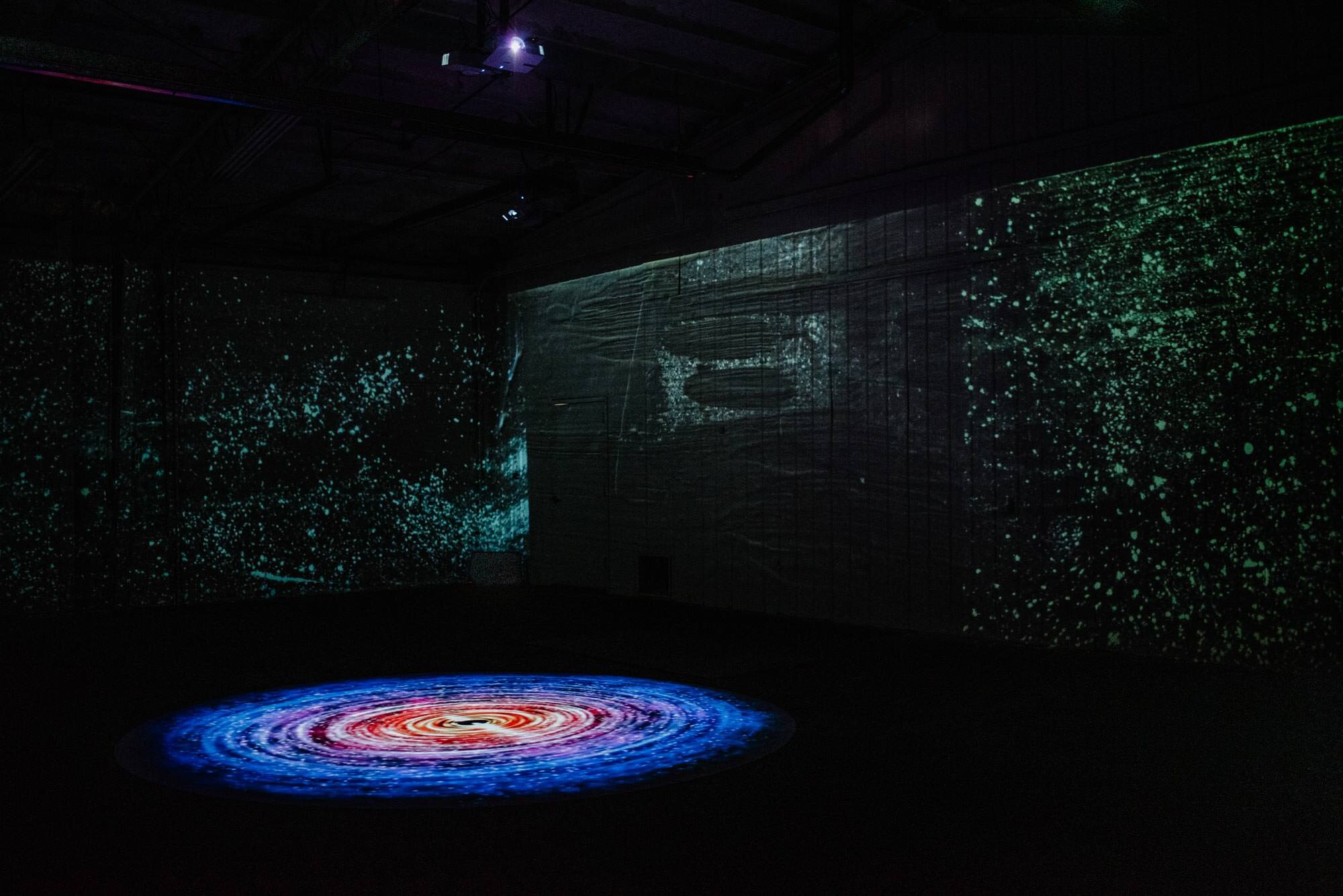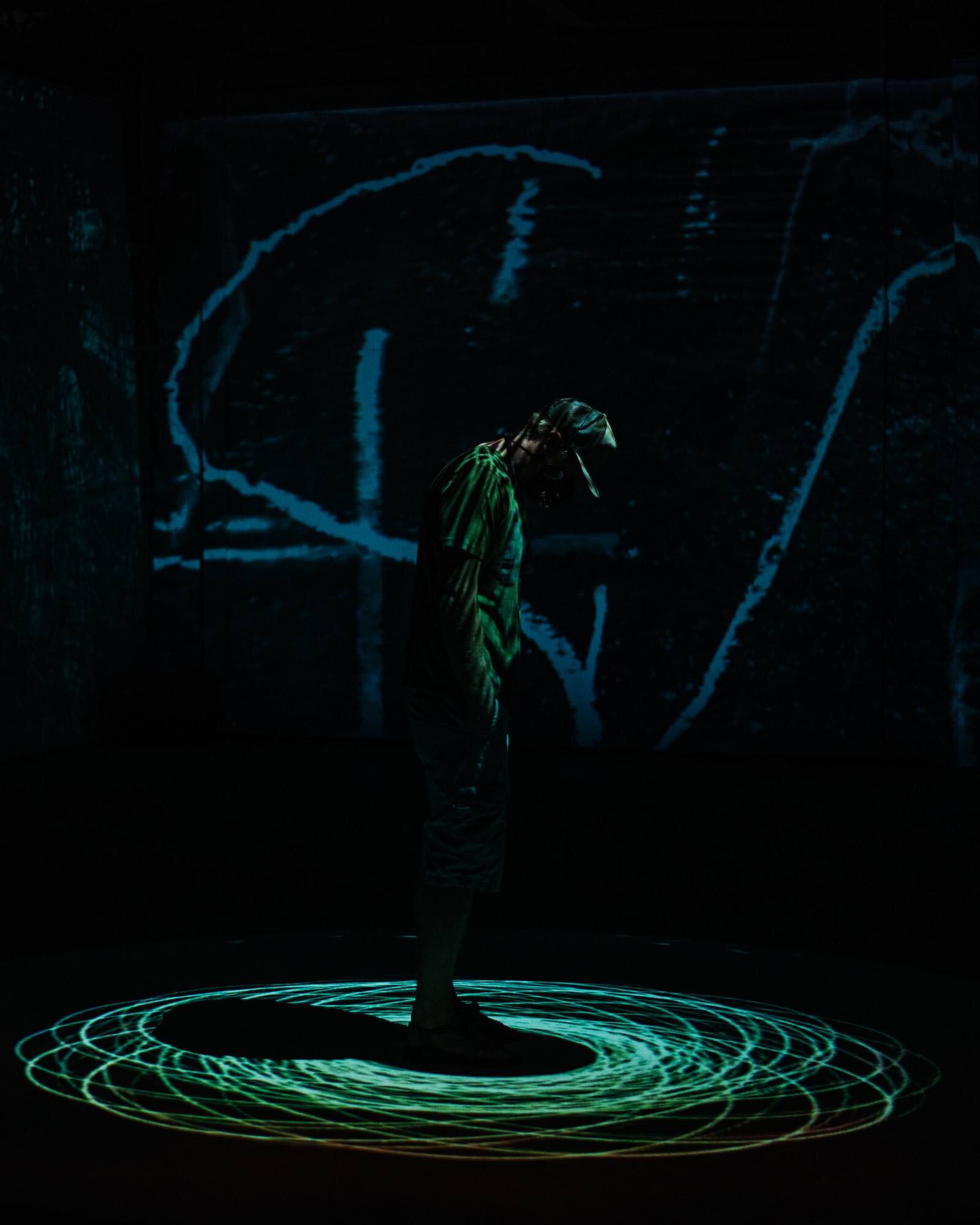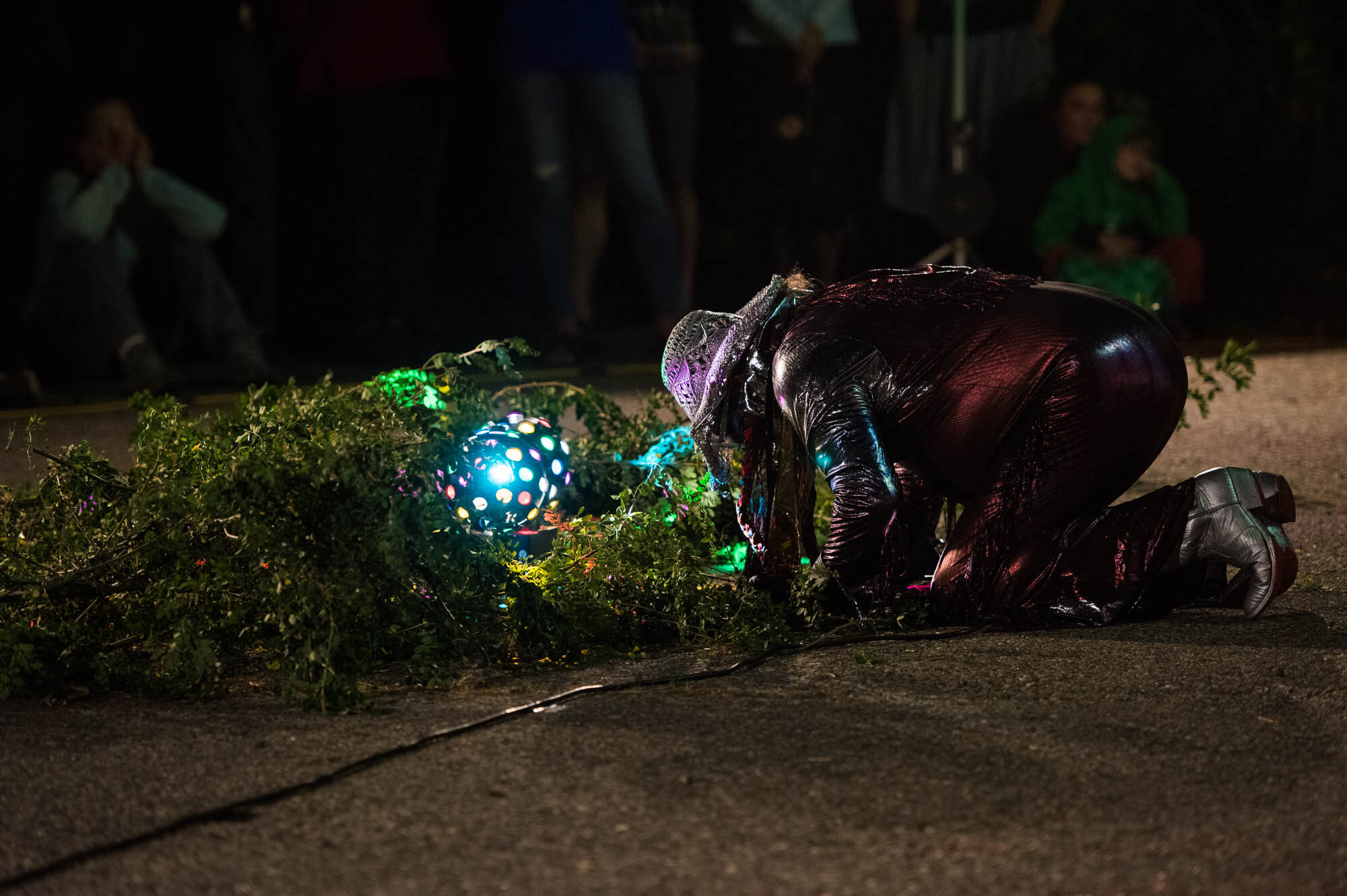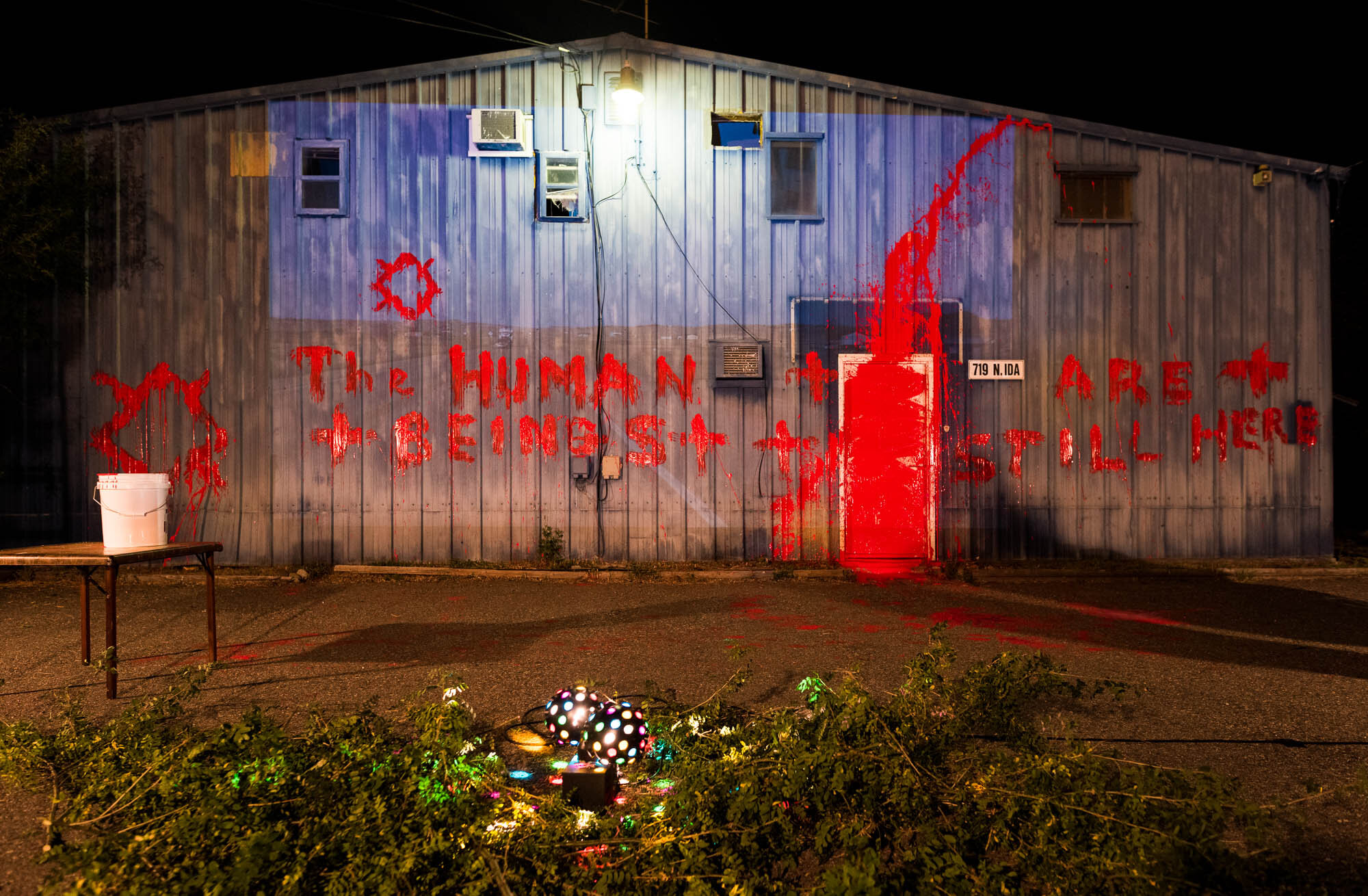TINWORKS ART 2020
ARTISTS
Months of anxious social distancing have created an undeniable appetite for culture and fellowship. Tinworks Art 2020 features the work of thirteen artists and collectives, both local and non-local, working in a diversity of mediums, and at all stages of their careers. What they have in common is their capacity to weave together our solitary experiences of the pandemic into a shared one. The artists have been selected for their challenging ideas and unique perspectives.
Some address the novel coronavirus directly. Avram Finkelstein’s installation, for example, explores the relationships among three public health crises: AIDS, COVID-19, and widespread poverty. Criticism of the federal government’s pandemic response, as well as the unevenness of its physical and economic impacts, have added momentum to decolonial and anti-racist movements against police brutality, immigrant detention centers, and mass incarceration. Artists like Kota Ezawa and the collective Paintallica employ the visual language of protest so central to this summer of political action.
Others take a sidelong approach to this extraordinary moment. Space, but especially negative space, is a persistent theme of the exhibition. The work of Cristina Marian and Anthony Discenza considers the increasing importance of open public space during a health crisis that keeps people homebound. The Einstein Collective fabricates astronomical spaces that transport the viewer to the expanses of outer space, while Chris Fraser’s Asterisms uses the building’s architecture to create a solar observatory. Still others explore the emotional highs and lows that accompany social distancing.
Each installation in this summer’s exhibition has been conceived with the safety of the public in mind by maximizing our outdoor venues and minimizing the temptation to congregate. We are holding fewer public events, with limited attendance, and no grand opening. We have opted instead for a fazed opening, one that embraces the disturbances of our current moment, as incitements to consider what we do and do not value in our homes, communities, and nation.
Curated by Dr. Melissa Ragain and Eli Ridgway.
Community Engagement Updates
By Anthony Discenza
anthonydiscenza.info
@yourethinkingofabrickwall
The Community Engagement Updates are a series of 8 ½ x 11 flyers produced for Tinworks Art 2020. Designed to be posted on local community bulletin boards around town, each of the three Updates repurposes language from the leaked transcript of an internal June 2, 2020 meeting between Mark Zuckerberg and Facebook’s employees, which had been convened to address his decision to leave up an inflammatory post from Donald Trump regarding the nationwide protests for racial justice in the wake of George Floyd’s murder. Zuckerberg’s decision produced widespread dissension within Facebook and later led to a massive advertiser boycott of the platform.
The language Zuckerberg uses throughout the meeting is curious for its opacity, repetitions, and avoidance of direct terms to address the issues at hand. Extracted from its original context (and shifted from the first-person singular to the first-person plural), its dissociative qualities become more ambiguous and absurd, but also more ominous and far-reaching. This material feels particularly relevant in the current moment, not only for its timeliness but for the way the evasiveness of Zuckerberg’s language mirrors larger dysfunctions in the US.
By extracting material from an internal meeting at Facebook, one of the most powerful entities in the world (the platform currently has more than two and half billion users, or roughly one-third of humanity) and inserting back it into the context of a local community bulletin board—a real-world, analog format upon which the earliest versions of Facebook were modeled—the Community Updates also comment ironically on the scale of such platforms, and their ability to influence individual perceptions.
Black (W)hole
by THE EINSTEIN COLLECTIVE
Originally developed in 2014 for the “Celebrating Einstein” events at Montana State University, Black (W)hole uses data visualization of an extreme mass ratio inspiral (EMRI) with the aural data of gravitational wave frequencies in a work examining cosmic destruction and creation. It engages mind and body in both historical and current gravitational wave astronomy.
The viewer enters the space and encounters a circular floor projection that emulates the edge of a black hole accretion disk, which swirls into a supermassive black hole in Newtonian trajectories. The point of view zooms in to the edge of the black hole as a much smaller one is captured and begins to spin around the larger one. The morphing equations move from star fields to chalk dust, referencing 100-year old Einstein equations scrawled in chalk on the blackboard behind his desk at Princeton, the solutions of which predicted the existence of black holes. Einstein published the Theory of Relativity in 1916.
Through bodily engagement, The Einstein Collective’s aim is to create a space in which the viewer can imagine and ponder their origin in the cosmos. Black (W)hole represents both creation (in Einstein’s equations that predicted the existence of black holes over 100 years before their discovery) and destruction (one black hole being sucked into and consumed by a larger black hole) in an imaginative work of, “artscience,” a neologism defined by Harvard’s Art Lab as “the process of creative thought that synthesizes esthetic and analytical methods.”
National Anthem
by Kota Ezawa
Kota Ezawa’s animation, National Anthem, revisits the televised protests of San Francisco 49ers quarterback, Colin Kaepernick, during the 2016 season of the National Football League when players took a knee during the national anthem to protest police violence against unarmed Black men. Starting from television footage of NFL games, Ezawa meticulously created over 200 individual watercolors which became the individual frames of the animation, effectively translating the camera-based images into something handmade. Scored with an instrumental version of “The Star-Spangled Banner,” the film presents Kaepernick’s gesture as an eminently American one. The trembling effect of the handmade frames slows down our reception of these mass-media images to reveal a more meditative and reverent relationship to them. Ezawa is a naturalized U.S. citizen and the son of a Japanese immigrant to Germany. He is based in Oakland, where Kaepernick played and has said that the protests made him feel very connected to the United States.
In solidarity with the Bozeman Rally for Black Lives on 5 June 2020, Tinworks Art showed National Anthem in the lobby of the Rialto theater along with the painting Built Upon Our Backs made collaboratively by Ella Watson, Judith Heilman, Lyla Brown, and one other young Black woman who wishes to remain anonymous. Bozeman for United Racial Justice hosted the rally in partnership with the Montana Racial Equity Project and Montana State University’s Black Student Union. Protest signs collected at the march surround Ezawa’s film.
1933/1984/2020
by AVRAM FINKELSTEIN
For Tinworks Art 2020, Avram Finkelstein has created a series of eight hanging pieces that integrate the language of the graphic image with that of the handmade. In concert with one another, they urge us to contemplate the relations among public health, economics, personal loss, and state responsibility by anchoring us in three world-historical moments—the years 1933, 1984, and 2020.
The installation begins along the back wall with a series of opaque hangings. On the far left, HOME is in dialogue with three historical single-word images, each referring to the other, each encapsulating a cultural zeitgeist. They are Robert Indiana’s LOVE (1965), General Idea’s AIDS (1987), and Gran Fury’s RIOT (1989). The latter two images were also made in response to a pandemic —the ongoing AIDS crisis. The word home is a meditation on conditions necessitated by America’s pandemic response in 2020, in a way that circles back to the originals as symbolic of sheltering and/or self-care.
The two central images are a meditation on two radically different attempts to compensate for economic strife in 1933: Germany’s (the burning of the Reichstag), and America’s (the creation of the New Deal). Finkelstein employs historical photographs that reference these events, including that of a Social Security Number proudly tattooed on an Oregon itinerant worker’s arm during the Depression.
Each of these images is accompanied by a sheer textile with hand-drawn texts that are Finkelstein’s personal attempts, as a Jewish gay man, to square his own feelings about the events of 1933 with the experience of living through a lethal pandemic, twice in one life, and the similarities and differences between them. The first text is redrawn from a journal he kept after his boyfriend died of AIDS in 1984. The second is a line from a poem that appears in John Huston’s 1987 movie The Dead. A friend asked him to take him to see it and was dead within a month.
Finally, We’re Here For You ponders the meaning of a proliferate contemporary advertising phrase and its relationship to pandemic preparedness and commercial responses in late-capitalism.
Asterisms
by Chris Fraser
“This project is inspired by the Renaissance practice of retrofitting large cathedrals with pinholes, effectively transforming sacred spaces into gigantic solar observatories and reliable timekeepers. During the 15th and 16th centuries, the Catholic church was committed to reforming the solar calendar due to uncertainty about when to celebrate Easter. At a time when Galileo was under house arrest for saying the earth revolved around the sun, this led to a strange alliance between theologians and astronomers and resulted in our present secular calendar.
The installation calls attention to the specific transit of the sun over Bozeman, MT, through the creation of a large, multi-pinhole camera obscura designed for the site and season. Visitors watch the sun pass overhead by looking at the patterned projection of disks covering the floor, walls, and themselves. The projection resembles a star chart. But rather than looking up into the night sky at a multitude of stars, visitors look down at an image of one star, our sun, repeated several thousand times.
The pattern of the projection is fluid – changing with the time of day, as disks gather on the west wall at sunrise, fall across the expanse of the floor at solar noon, and congregate on the east wall at sunset; changing day to day, as the sun dips lower into the sky, pushing the projection further into the room and increasing the size of the disks and the degree to which they overlap. The project creates a space for exploration and quiet contemplation, immersing visitors in an experience of time marked not by numbers but an attention to place.”
— Chris Fraser
When Was That Again?
by JANE HERZOG, KELSIE RUDOLPH, and TUK VAUGHANKRASKA
Herzog, Rudolph, and Vaughankraska have transformed the main entry gallery of Tinworks Art into a seemingly distant and private space. When was that again? explores the relationships between the theatricality of public display and the inward dimensions of tactility and memory through the lens of domesticity. Themes of repose and relaxation, suggested by the soft forms of quilts and upholstery and the affordances of functional furniture, are presented teasingly, since they can only be experienced visually and at a distance. These vignettes and the space as a whole create a surreal domestic landscape that asks the viewer to remember obscure moments of comfort. The objects within it can also be understood as the framework for a distorted memory, each piece acting as a placeholder for where or when something has happened.
Changing Time, Changing Place
by Cristina Marian
Marian works with a variety of mediums including painting, sculpture, and installation, that evolve out of gestures, materials, colors, and textures. She is now exploring how new media can relate to her paintings, “It started with my desire to bring 3D gestural marks or brushstrokes into the gallery space.” This site-responsive piece, Changing Time, Changing Place, combines public murals, architecture and sculpture to capture our rapidly changing relationships to Bozeman and to public space during a period of rapid population growth and development. “Each of the three works tells a story of how past, present, and future coexist and reflect in one another. They portray the way we respond when familiar and unfamiliar intersect in a place that is morphing with or without our desire to do so.”
Marian’s mural rearranges sightlines pulled from around the Tinworks building and the booming North East Neighborhood. “To me, this neighborhood is all about lines: metal or wooden house siding, electrical poles and cables, ninety-degree escape stairs, metal structures with long histories, and train rails.” A walk around the area reveals some of the murals’ central elements – buildings and poles, construction plans and structures, abstract arrangements that suggest the rhythms of local sounds and stories. She even includes architectural details from inside the grain building on which the mural hangs. Looking closely, the viewer will find that Marian, who is an experienced miniaturist, has included small details of animals and insects who live in the fallow lot adjacent to the building.
I Love You
by LEE MATERAZZI
Tinworks presents nine photographs on dibond by Lee Materazzi, which can be found along the spur trail on the North side of the Tinworks complex. Of this series, Materazzi writes:
“Everyday objects, things that are on hand, remnants that get left behind and blend into the background are the starting point for this work. I examine the shape and explore the different ways in which my hands can manipulate. I stack one thing on top of another and tinker with the ironic relationships between large bouncing balls and a juice box or perhaps accentuate a smudge that wasn’t supposed to happen. I paint everything all one color, monochrome, myself included. I use my body sculpturally and performatively alongside my materials. At times it’s hard for the eye to decipher where the object and paint end and I begin. Physically, the work evolves through experiments of color composition and balance.
Just as the objects that I have chosen are lost in the background of everyday life the works also explore the equivalent of suppressed emotions within sexuality, gender roles, motherhood and insecurities of disconnectedness. As the shape of each object is explored in its raw discarded state so are these displaced emotions. The end result creates a scene for the camera that makes us think about social roles, routines, and gestures that are frequently overlooked within our everyday lives. I straddle a storage rack bent over forward as a tin of markers inches up behind me. My arms rest on the shelf below near a used Amazon box—everything is lilac.”
Sick of Winning
by Paintallica
Paintallica’s project for Tinworks Art 2020 begins with two commercially available custom inflatables, one of a Corona beer bottle and one of an astronaut. Once installed, these inflatables served as blank canvases that Paintallica radically transforms through painting, “over the course of a week as we attempt to wade through the neck-deep craziness that is ablaze in the world. Feels a little weird to try this under the circumstances but we couldn't pass on a chance to weigh in on this stuff. And while we won't be saving any goddamn days, we WILL be temporarily emerging from playing possum to ‘tell ‘em how we really feel’ about the cornucopia of loco that is 2020. It looks like the world is going to need some new monuments.”
Paintallica describes their process as, “a mixture of mud wrestling and military deployment. We begin by sitting around a large table making drawings and passing them back and forth to create a communal pool of ideas. These drawings inform how we approach each new project and ensure that our content arises organically rather than strategically. They keep us focused on the unexpected meaning created by uniting individual voices and allow us to quickly explore a wide swath of contemporary culture. Like the Dadaist, our realm is a mixture of taboo, mundane, clumsy, deft, and absurd that we feel allows us to best capture the mood of our times.”
Stratum Reset
by Bently Spang
In this soon-to-be demolished space, Bently Spang presents a new performance work that flips the persistent myth of ‘The West’ on its ear revealing the even more persistent layer of Native existence that never left this place. Accompanied by a soundscape work created by his son Troy Spang, an accomplished musician, he creates a contemporary cairn of sorts, a marker, to reset the understanding of this place on the earth as it moves into the next stage and remind the viewer of the true complexity of place.
The Gallatin Valley is historically a place of gathering for many Native nations, providing sustenance for us on many levels. The confluence of the 3 rivers that form the Missouri headwaters in this valley attracted tribes who all agreed to lay down their weapons so that all could benefit from the resources in this area. And, our continued presence here is evidence of the power of our cultures and I want to celebrate that power and our convergence with different cultures here in this place of convergence where rivers, food, and life all come together. I want to unearth our layers of the past on this land, decolonize those layers as best we can through an art action, and combine it with today’s layer. This can potentially embolden and strengthen us as Native peoples and, at the same time, provide deeper insights into our uninterrupted existence for the non-Native community.
This performance at Tinworks Art is a chance to help restore this often overlooked layer of Native history in this place of power for many Native peoples and connect it to the uninterrupted continuum of Native existence that I and other living Native peoples have always been a part of. And, to do so in a cross-cultural action that celebrates the power of culture and creates the potential for resolution and moving into the future in a new and more culturally unified way.
— Bently Spang
Liminal Space
by Blair Speed
Blair Speed’s contribution to Tinworks 2020 comprises six photographs on Dibond that explore the idea of thresholds or transitional states. As Speed writes “Liminal Space is the in-between -- we aren’t what we were, we’re not what we will be.” In 2019 Speed’s husband, “died when a part of a mountain he was standing on broke off last July. He was 33 years old. He was, he is, my universe. We spent 10 years in physical form next to one another. He died. And, then, we all walked into a global pandemic.”
Each black-and-white image is shot in a landscape format, though Speed’s subject matter ranges from skyscapes to figure studies and still lifes. Together, they create a somber and mysterious horizon line that is at once reassuringly familiar and unsettlingly opaque. She writes, “My photography, like my life, has become groundless and now floats within the spectrums of light and dark. These images in transition, my life in transition, our world in transition: Liminal Space. This series holds the space for contradictions: the seen and the unseen, infinite love and infinite loss, light and dark, learning and unlearning, the split within the veils. These images of liminality hold moments in transition, transmogrification, and reflection; a hand on a horse, a best friend, who will die in a week, but the connection remains. A chair alone in a home that once was and now is going back to the earth, as we all will.”
VIDRIERA:FRAGMENTX
by Dorian Wood
Echoing the defiance of several U.S. churches that chose to offer services at the beginning of the COVID-19 pandemic, VIDRIERA:FRAGMENTX challenges the familiar notion of blind faith overshadowing mortal fear, via a non-denominational mass in four sections, drawing inspiration from stained glass religious dioramas. The Tinworks space becomes a temple in flux with scheduled screenings of the 30-minute performance. Attendees are asked to remain in their seats in complete silence throughout, except when prompted to respond by the officiant on screen. The artist embodies each section differently, aesthetically depicting different facets of their true being, outside of the boundaries of their brownness, their fatness and their non-binary queerness.


























